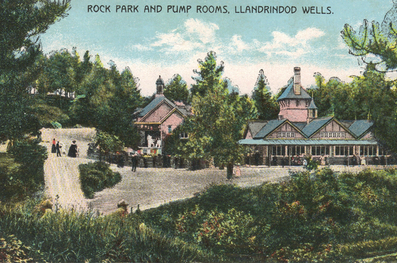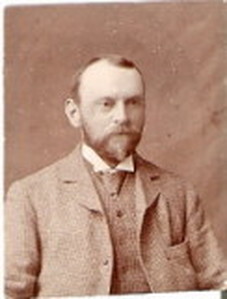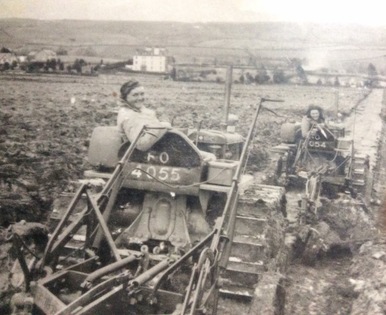Spa History of Llandrindod Wells
The ‘Wells’ at Llandrindod had been resorted to as early as 1696 when the Vaughans of Herefordshire stayed for three weeks to take the waters. The Chalybeate spring, known as the rock water had been used “since time immemorial”, while the saline and sulphur springs were rediscovered in 1732 by Mrs. Jenkins the tenant at Bach y Graig farm. She began to sell the waters to travellers and the fame of their healing properties rapidly spread. The farm became known as the pump house and later the famous Pump House Hotel.

Dr. Linden visited Llandrindod in August 1754 and was so impressed by the waters that he felt they should be publicised to a wider audience and wrote about them in his ‘Treatise on the Medicinal Waters of Llandrindod’. He heard of the reputation of the mineral waters and sought a cure for his scurvy and for his injuries due to the ‘noxious mineral damps’ (foul air) sustained as a result of analysing mineral waters during his European tours.
He re-classed the three types of mineral waters into the Saline Pump-water, the Chalybeate Rock-water and the Stinking or Sulphur Well. It was the Saline Pump-water that effected a cure after drinking for just four weeks. The experience also enabled him to evaluate cures of other imbibers. This led to numerous conclusions such as the best time to drink the waters being before the sun was high, and that the Rock-water was only effective on the spot, 10-12 yards distance rendered the water powerless.
Today medicine is a sophisticated industry employing state of the art technology and expertise, so we do view the water cure with certain incredulity. Yet Dr. Linden and his contemporaries were able to gain the support of the populace at large with their advocacy of the spa regime. A combination of carefully considered water based treatments, supported by a programme of activities, social and therapeutic, resulted in both psychological and physiological well being and healing.
Even as late as 1855, Llandrindod was not a sophisticated spa. Bath, Tunbridge Wells, Harrogate Spa and many more of the major 18th century spas were by now in decline and the new era of hydrotherapy was giving momentum to such locations as Ilkley, Matlock and Malvern. Welsh spas were different. Llandrindod was seen as a precursor perhaps to a sojourn at a seaside resort to partake of a course of the fashionable habit of sea bathing. Llandrindod was however, destined to become the fashionable and major Welsh National Spa, rising to an eminence that surpassed all other Welsh Spas.
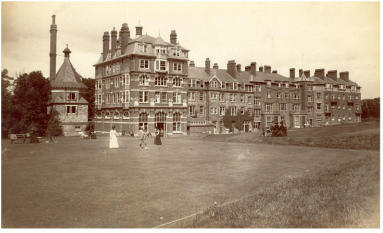
The wells were situated on a bleak common, the sight of which dismayed many visitors. Accommodation was provided at farmhouses around the common and at the Llanerch Inn, but facilities were primitive until the opening of Mr. Grosvenor’s hotel, which soon became fashionable, with its excellent accommodation and entertainments and was described by him as
“on for the invalid of whatever rank and distinction, field amusements for the healthy…. balls, billiards and regular assemblies varied the pastimes of the gay and fashionable.” (Llandrindod Farm, renamed Llandrindod Hall in 1749)
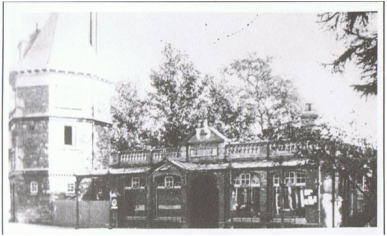
The Hall was the centre of revelry and extravagant living for 40 years and music was very much part of the 18th Century spa and cultural scene. There was a theatre, cockpit, bowling green and a hunt was organised for the amusement of the ‘invalids’. Llandrindod Hall had 100 beds but this was insufficient for the vast number who visited. 1,000 people could dance in the Great Hall. Three factors combined to end the boom period for this hotel 1)A shift to the Pump House Estate with more modern facilities (where Llandrindod Wells is now), 2)Influence of the Methodist Revival and 3)Advent of sea bathing and it closed in the early 1790’s. It was not until the early 19th century that further substantial development was to ensure making Old Llandrindod a backwater. Llandrindod itself was still only a small village of 192 people with 2,884 acres.

During most of the 19th century, Llandrindod was sporting two groups of mineral springs – the original saline and sulphur springs as investigated by Linden based at the Pump House Estate and the Chalybeate Rock Spring on the Rock Park Estate. Sometime in the 1740’s a proper Pump House was established by the springs in the Pump House Estate though it would seem that much later when the Hereford Journal carried details of a Grand Ball, in 1811 that the spa effectively replaced the Llandrindod Hall facilities.
In 1840’s 11 bedrooms were added to the 30 beds and together with good coach houses and stables, billiard and assembly rooms, carpeted parlours and landscaped gardens, it finally was called a hotel. The Pump House Hotel was enlarged into a premise with two tariffs – first and second class visitors which gave rise to the expressions House of Lords and House of Commons. The season was from May – October. Shooting and fishing were to be had for sportsmen. The Pump Rooms and grounds were tastefully laid out for 45 people. Weekly terms which included use of the waters and board and lodging were £2.2.0 (£2.10) or lower rate of £1.15.0 (£1.75) per week or 7s (35p) a day. Medical advice was recommended before drinking the waters. Meals were “with the company” at a table de hote. Transport was by flys, cars and ponies kept by the hotel. Some visitors consumed as many as 30 glasses of the waters in a morning, although the average was 8 or 9. The party at the Hotel varied from 5 – 15. The church was crowded and the preacher excellent.

The Boom Years – 1865 – 1918
The development of Llandrindod on a large scale was inhibited by the remoteness of the area and the lack of good building land. The enclosure of the common in 1862 and the construction of the railway in 1865 ushered in an area of rapid change. The first section of the Central Wales Railway line from Knighton to Llandrindod Wells was constructed by Richard Green-Price and opened in 1865 and the whole line completed in 1868, giving a through connection from Shrewsbury to Swansea. This had the effect of opening up mass transport routes to South Wales, Merseyside and the Midlands, particularly the industrialised coal and steel centres which were important catchment zones for Welsh spa patients and visitors began to arrive in large numbers.

In 1862 an Act of Parliament was passed to enclose the common lands of the manor of Swydd Neithon, which included Llandrindod common. The Act came into effect in 1867 and the common was divided among local landowners, public areas, building plots, roads and pathways. The railway divided the common and separated the two principle spa sites the Rock Park Wells and the Pump House Hotel. Land to the west of the railway quickly developed at the Rock Park Wells and formed a focal point for the rapidly expanding town around the High St and the Llanerch Inn. Formerly the Rock-house Inn, (in 1825), it was built of stone and had two parlours, one for dining and the other the withdrawing room for the ladies. In 1862, the Rock House Estate was purchased by Mr. Dansey Green-Price.
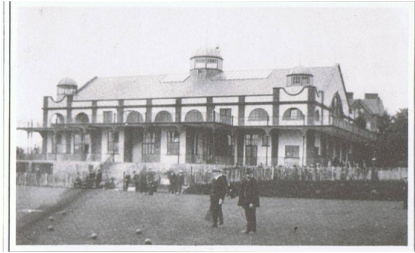
Thus with the enclosure of the common, principle land-owners were the Green-Prices who owned the Rock Park Estate, Middleton-Evans who owned the Pump House Hotel and land East of the railway and J Gibson Watt, lord of the manor who owned land West of the railway but to south nearer Howey.
The area around the Rock Park developed rapidly as the centre of the new town with a church, shops, hotels and private houses. Progress was slower on the land east of the railway. The Holy Trinity Church was built in 1871 and some private houses and a hotel along the side of the main road, named Temple Street, after the stone circle near by. In 1872/3 the marshy land near the Pump House was drained to form an ornamental lake. Llandrindod was now taking shape as a town to meet the needs of Victorian visitors.
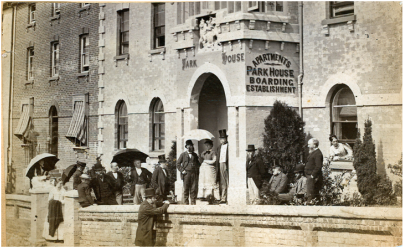
Between 1865 and 1914 the appearance of Llandrindod was that of a boom town. Hotels and boarding houses sprang up along the streets and shops were opened to meet the needs of visitors and residents. Many of the private houses were built on the grand scale characteristic of the era.
Outside the pump rooms at the Rock Park and the Pump House Hotel the visitors queued each morning to take the waters, entertained by music from orchestras. The amount of waters drunk varied from two to six glasses at a time, depending on the type of ailment, and the charge at both pump rooms was 6d. per day for any amount of water. In 1909 the High Street Baths opened, offering the wide range of electrical treatments which were expected at a modern spa. Treatments included:

- Strong sulphur immersion
- Hydro-electric-medicated sulphur baths
- Carbonic acid baths
- Effervescing pine or medicated baths
- Spinal sulphur douche
- Vichy massage douche
- Aix douche massage
- Tribune scotch douche
- Radiant heat baths
- Fango radioactive mud treatment
- Tyrmauer electrical hot air apparatus
The spacious lay-out of the town meant it could cater for the growing popularity of outdoor sports. A private 9-hole golf course was opened on the common by the Pump House Hotel in 1893, possibly the first in Wales. The 18 hole course above the lake opened in 1906. Many of the larger hotels had tennis courts and croquet lawns on their grounds and horse races were held on the rock Ddole, a meadow near the river. In the early 1880’s Middleton Street consisted of wooden shanties and open air stalls, but it gradually replaced the High Street as the focal point of the town. The most famous shop was probably the Central Wales Emporium, opened in 1881 by William Thomas of Penybont. It sold a large variety of goods, including a range of illustrated guide books and a type of cloth named ‘Spa Flannel’. This business closed in 1927, when the spa was in decline.
In the 1880’s, Thomas Heighway became the tenant of the Rock Park and was responsible for numerous innovative improvements including:
1)Electrical therapies, complex strays, douches and baths and various packs where peat and other mineralised matters were applied
2)The bottling and sale of water to local hotels in 1-2 gallon jars
3)The discovery of the following springs in the Rock Park including the Roman Spring in 1893, the Magnesium Spring in 1893, the Radium Sulphur Spring 1904 and Lithia Saline Spring in 1905.
Around the turn of the century, the Rock Park Wells underwent financial restructuring about this time and this prompted Mr. Heighway, who has been responsible for day to day management and for many innovations, to part company. The Rock Park or Doldowlod Estate together with Mr. Heighway’s tenancy was eventually purchased by Llandrindod Springs Ltd under the managing directorship of Mr. George Baillie. Before departing, the 1891 census records Mr. Heighway, a mineral springs and Bottling Manufactory proprietor, living at 1 Arcade Cottages.
The changes however prompted Mr. Heighway who had established a reputation for discovering new mineral springs over the years, to acquire former common land south of Llandrindod Wells to develop their new 20th Century spa the Highland Moors Hydro Spa to the South of Llandrindod Wells. Heighway’s enterprise at Highland Moors resulted in Llandrindod’s fourth Pump Room, the others being The Rock Park, the Pump Room Hotel and the Recreation Ground Pavilion Pump Room.
In 1888, the town was still being described as dirty with unfinished and temporary buildings, but by 1902 it was a sophisticated modern town with an air of prosperity that made it the premier Welsh Spa.
Two pump houses were built in the grounds and served two different purposes; the Westerly one supplied spa water to the drinking fountain in the South West corner (reached via a pathway) and the Easterly pump room provided water for the Hydro Spa and the plunge pool via a large storage above the Spa.
By 1911, Highland Moors was being advertised in local guides. Described as a new ‘Private Hotel’ facilities included its own dairy farm and produce. The Rock Park, Ye Wells, Metropole, Plas Winton and Highland Moors all had their passenger buses drawn by horses.
Before the 1914/18 war Llandrindod was very busy with visitors. On Sunday morning, the Gwalia square was a sight to behold. All the places of worship were packed. The Grand Pavilion was built in 1911, and more mineralised springs were found. The population grew to 4,596 in 1921 probably represented the zenith of Llandrindod Wells development.
Interwar Years and Decline – 1919 -1970’s
Immediately after the Great War in 1919, Llandrindod has ambitions to embark on an extended era of spa prosperity, and the list of treatments reads like a torturer’s shopping list. Technology had taken over from the simple application of mineralised waters in Llandrindod, Leamington and Woodhall. These included electrical therapies, complex sprays, douches and baths and various packs where peat and other mineralised matters were applied. Such treatments matched those offered by the best Continental spas. But in spite of this, Llandrindod like many other spa resorts in Britain saw a steady decline in business. This decline was brought about by a number reasons:
1) Competition from French, Swiss and German Spa resorts and reduction of tariffs because it was less expensive to go abroad than visit Scotland
2) Commercial considerations became more important than scientific endeavour
3) Pleasure and medication were becoming separate concepts
4) Advances in medicine and lack of scientific accreditation for the cures resulting from water therapies. The spa industry responded with exotic technology but water also became less significant within the treatment.
5) Industry was badly organised in the medical sense and lacked trained qualified specialists
The concept of the spa lost credibility and a spiral of decline ensued. The NHS became the main financier of hospitals and medical establishments after WW II. It would seem that withdrawal of long term Local Authority investment was a major factor which resulted in infrastructures becoming decayed and less relevant compared to substantial public commitment to future commercial health of spa industry in Europe.
In 1951, the British Medical Association published The Spa in Medical Practice. The Pump House was open throughout the year and outpatient facilities existed at High St and the Rock Park Baths but little profit was made.
Mr. Seymour Edwards Chairman of the spa committee stated after declaring income of £1,286 for April – August 1956, ‘I am not suggesting closing down the spa establishment which I hope will go on for many years, but we should settle down seriously to see if we can attract some industry’ (Source: Montgomery Express & Radnor Times, 16th Sept 1956)
In the 60’s 300,000 patients frequented the spas in the UK per annum. In 1972 a new physiotherapy unit was opened in the Llandrindod Wells hospital and the Rock Park centre closed. In 1974, the Pump House Hotel was purchased for County Council Headquarters and by 1978 Llandrindod’s spa treatments had ceased. It’s anyones guess now what the 21st Century may bring in terms of new opportunities for Llandrindod Wells and its famous Spa heritage for almost 300 years.
Source: The Historic Spas of Central Wales, Llandrindod Wells, by Bruce Osborne, 1999) Available at Verzons Bookshop & Gallery in Llandrindod Wells 01597 825171. Photos courtesy and by kind donation of local residents.


